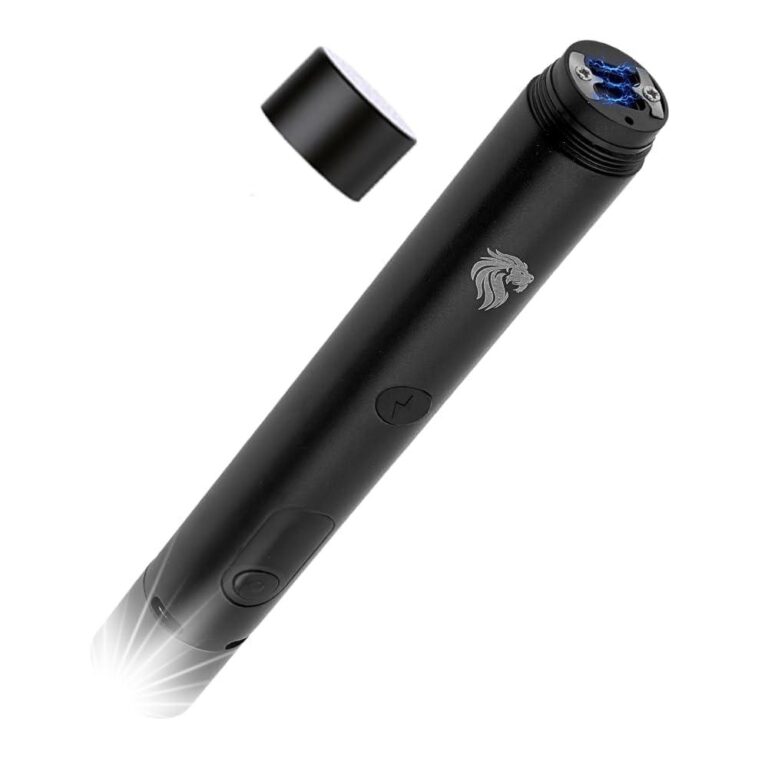Table of Contents
- Understanding Legal Restrictions on Concealed Stun Guns in Different Jurisdictions
- Evaluating the Risks and Benefits of Carrying a Concealed Stun Gun
- Best Practices for Demonstrating Legitimate Self-Defense Use in Court
- Tips for Safe Storage and Responsible Handling to Avoid Legal Complications
- Key Takeaways
Understanding Legal Restrictions on Concealed Stun Guns in Different Jurisdictions
When it comes to carrying concealed stun guns, legal parameters can vary dramatically from one jurisdiction to another. Some states or countries allow possession without any permits, while others impose strict registration requirements or outright bans. It’s crucial to research local laws thoroughly before deciding to carry a stun gun, as ignorance can lead to serious legal consequences, including fines or criminal charges. Furthermore, restrictions often consider factors such as the stun gun’s voltage rating, usage context, and whether the device qualifies as a weapon under the law.
Key aspects to consider include:
- Permit and licensing requirements: Many areas demand a concealed carry permit or license specifically for non-lethal weapons.
- Place restrictions: Certain public places, government buildings, schools, and airports may prohibit carrying stun guns altogether.
- Age limits: There are often minimum age requirements to legally possess and operate a stun gun.
- Usage regulations: Using a stun gun outside of legitimate self-defense can escalate legal consequences.
Understanding and respecting these nuances not only ensures compliance but also maximizes personal safety and the responsible use of stun guns as self-defense tools.
Evaluating the Risks and Benefits of Carrying a Concealed Stun Gun
Carrying a concealed stun gun comes with a unique blend of advantages and potential drawbacks that every individual should carefully consider. On the benefit side, these devices offer non-lethal self-defense by temporarily incapacitating an attacker, allowing for a quick escape without resorting to deadly force. Their compact size and ease of concealment make them ideal for discreet personal protection, especially in urban or unpredictable environments. Additionally, the psychological deterrent effect of merely displaying or mentioning possession of a stun gun can de-escalate confrontations before they escalate violently.
However, the risks linked to concealed stun guns must not be overlooked. False senses of security can lead to reckless behavior, putting users in harm’s way. Legal restrictions vary widely, so it’s crucial to understand local laws to avoid encountering criminal charges. There are also limitations in device effectiveness-stun guns require close proximity and adequate contact time, which may not always be feasible in high-stress encounters. Consider these important factors:
- Legal compliance: Verify state and municipal regulations before carrying.
- Proper training: Familiarize yourself with operation and safety precautions.
- Physical limitations: Understand the stun gun’s range and contact requirements.
- Ethical considerations: Use responsibly and only in genuine self-defense situations.
Best Practices for Demonstrating Legitimate Self-Defense Use in Court
When defending your use of a concealed stun gun in court, clarity and evidence are paramount. It’s crucial to document the circumstances leading to the encounter, including any direct threats or aggressive behavior from the attacker. Maintaining a detailed account of the situation, witness statements, and, if possible, video footage can substantially support your claim. Additionally, understanding and demonstrating that your reaction was proportional to the threat faced highlights that the use of force was justified, rather than excessive or retaliatory.
Another key factor is showcasing your responsible ownership and use of the stun gun. This includes proving that you are legally permitted to carry the device, adhering to local laws, and having undergone proper training to wield it safely and effectively. Presenting evidence of training programs or certifications can reassure the court that your actions were not reckless. Finally, consulting with a seasoned attorney who specializes in self-defense cases can help frame your narrative to clearly convey the legitimacy of your actions within the legal framework.
Tips for Safe Storage and Responsible Handling to Avoid Legal Complications
When it comes to keeping a concealed stun gun, safety and legality should be your top priorities. Store your device securely in a location that is both out of reach of children and unauthorized users, such as a locked container or safe specifically designated for self-defense tools. Avoid leaving it unattended in vehicles or easily accessible spots, as this increases the risk of loss, theft, or accidental discharge. Regular maintenance checks are also crucial to ensure the stun gun remains in proper working condition without any defects that could compromise safety or function.
Responsible handling goes beyond mere storage-it means understanding and respecting the laws governing stun gun use in your jurisdiction. Always familiarize yourself with local regulations to avoid unintended legal pitfalls. When carrying your stun gun, keep it concealed and only accessible when necessary. Additionally, practice using the device safely, ideally under professional guidance or in low-risk situations, so you are prepared to act calmly and confidently if a self-defense scenario arises. Incorporate these precautions into your routine to uphold both your security and legal peace of mind.
Key Takeaways
In a world where personal safety is increasingly paramount, concealed stun guns offer a discreet yet effective means of self-defense. However, navigating the legal landscape surrounding their use is just as important as understanding how to operate the device itself. By staying informed about local laws, practicing responsible ownership, and prioritizing non-violent conflict resolution, you can ensure that your choice to carry a concealed stun gun not only protects you but also keeps you on the right side of the law. Remember, true self-defense is as much about preparation and knowledge as it is about the tools you carry. Stay safe, stay informed, and empower yourself wisely.Check Our Other Blogs
- StunGun – Your Trusted Source for Stun Guns, Laws, and Self-Defense Tips
- PepperSprayLaws – Your Trusted Resource for Pepper Spray Information
- StunGunLaws – Your Trusted Guide to Stun Gun Legality and Safety





